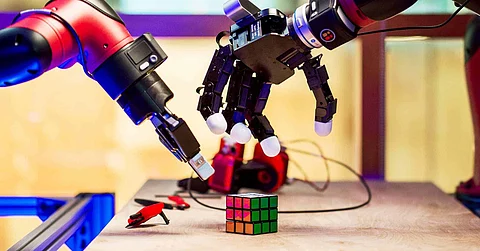

Examinations in robotics have been essentially coordinated toward the design of robots with a huge degree of knowledge, capable of high adaptability. Nonetheless, almost no examination has been done on the design of a robot manipulator as an executive mechanism of the intelligent control system, whose top-notch configuration will permit the modern capacities forced by the control framework.
Exploratory examinations of robot precision show unsatisfactory outcomes which limit their future wider application. This is the reason behind why the off-life programming of robots has not been generally utilized, without which it is difficult to envision a more significant integration of robots in the CIM environment.
Reasons for the low degree of robot precision are underscoring the non-corresponding choice of the robot coordinate system, algorithmic and computational mistakes and drive and transmission element design. Comparison with corresponding results picked up from examinations of CNC machine tools can't be dodged on account of the way that robots are additionally machines from which precision is required. What is absent in robotics today, however which unavoidably is required, is the foundation of a standard methodology for testing robot accuracy and other performance.
New research shows that curved origami structures have dramatic ramifications in the improvement of robotics going ahead, giving tunable adaptability, the capacity to change stiffness based on the function that verifiably has been hard to accomplish utilizing a simple plan.
The research by Arizona State University exhibits how curved origami structures can prompt tunable flexibility in robots. Tunable flexibility permits a robot to change its stiffness dependent on the job needing to be done, which in the past has demonstrated to be hard to execute with simple designs.
Hanqing Jiang is a mechanical engineering professor at the college and lead creator of the paper named "In Situ Stiffness Manipulation Using Elegant Curved Origami." The work was published in Science Advances.
"The consolidation of curved origami structures into robotic design gives a surprising chance in tunable flexibility, or solidness, as its complementary idea," Jiang said. "High flexibility, or low stiffness, is similar to the delicate landing navigated by a cat. Low flexibility, or high stiffness, is like executing a hard bounce in a pair of stiff boots."
Robotics technology requires an assortment of stiffness modes: high inflexibility is important for lifting loads; high flexibility is required for impact retention, and negative firmness, or the capacity to rapidly deliver stored energy like a spring, is required for run.
Generally, the mechanics of obliging inflexibility variances can be massive with ostensible territory, while curved origami can minimalistically uphold an extended stiffness scale with on-demand flexibility. The structures shrouded in Jiang and team's research consolidate the collapsing energy at the origami wrinkles with the bending of the panel, tuned by switching among numerous curved creases between two points.
Curved origami empowers a single robot to achieve a variety of movements. A pneumatic, swimming robot created by the team can achieve a scope of nine distinct movements, including quick, medium, slow, straight and rotational developments, by essentially changing which creases are utilized.
The team's exploration centered around joining the folding energy at origami creases with the board bending, which is tuned by moving along various creases between two points. With curved origami, a single robot is equipped for undertaking different movements. For instance, the team built up a swimming robot that had nine unique movements, for example, quick, slow, medium, straight, and rotational. To achieve any of these, the creases simply should be changed.
Other than robotics technology, the standards spread out in exploration could help design mechanical metamaterials in electromagnetic, automobile, and aerospace industries. It could likewise end up being valuable in the formation of biomedical devices.
"The excellence of this work is that the design of curved creases, and each curved crease corresponds to a particular flexibility," Jiang said.
The study was funded by the Mechanics of Materials and Structures program of the National Science Foundation. Creators added to the paper are Hanqing Jiang, Zirui Zhai and Lingling Wu from the School for Engineering, Matter, Transport and Energy, Arizona State University, and Yong Wang, Ken Lin from the Department of Engineering Mechanics at Zhejiang University, China.
Join our WhatsApp Channel to get the latest news, exclusives and videos on WhatsApp
_____________
Disclaimer: Analytics Insight does not provide financial advice or guidance. Also note that the cryptocurrencies mentioned/listed on the website could potentially be scams, i.e. designed to induce you to invest financial resources that may be lost forever and not be recoverable once investments are made. You are responsible for conducting your own research (DYOR) before making any investments. Read more here.
